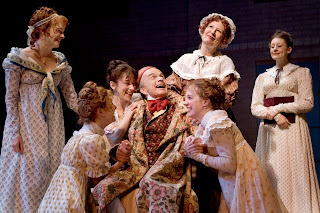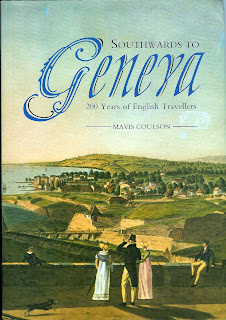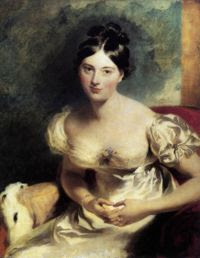 I’m still plodding my way through The Silver Fork Society: Fashionable Life and Literature from 1814 to 1840 by Alison Adburgham (Constable and Co, 1983) that I wrote about on June 4. Although I’m out of the strict Regency period, (it is around 1823 now) I have reached a chapter that describes country house parties. This seems perfect to mention, since Amanda has provided us with the country house in which we might all gather for a country house party.
I’m still plodding my way through The Silver Fork Society: Fashionable Life and Literature from 1814 to 1840 by Alison Adburgham (Constable and Co, 1983) that I wrote about on June 4. Although I’m out of the strict Regency period, (it is around 1823 now) I have reached a chapter that describes country house parties. This seems perfect to mention, since Amanda has provided us with the country house in which we might all gather for a country house party.
What might we do with ourselves?
Imagine my surprise to discover we might be bored.
Adburgham quotes Thomas Creevy, writing to his step-daughter in 1823 from Lord Sefton’s Stoke Farm:
“My life here is a most agreeable one. I am much the earliest riser in the House, and have above two hours to dispose of before breakfast, which is at 11 o’clock or even later. Then I live with myself again till about 3, when the ladies and I ride for 3 hours or so…We dine at 1/4 past seven, and the critics would say not badly. We drink in great moderation — walk out, all of us, before tea, and then crack okes and fiddle till about 1/2 past 12 or 1. “
I guess it all depends on who we might fiddle with!
 Mrs. Arbuthnot, in her journal in June, 1829, spoke of amateur theatricals at country house parties, which, of course, Jane Austen told us about in Mansfield Park. Mrs. Arbuthnot listed several participants at a house party at Lord Salisbury’s Hatfield. She said:
Mrs. Arbuthnot, in her journal in June, 1829, spoke of amateur theatricals at country house parties, which, of course, Jane Austen told us about in Mansfield Park. Mrs. Arbuthnot listed several participants at a house party at Lord Salisbury’s Hatfield. She said:
“They acted two plays and I really thought they played better than real actors. “
So I guess we might “put on a show.”
What are your plans to entertain yourselves this summer? I’m headed for a family reunion next weekend in Tennessee- my husband’s father’s side of the family. I’ll report in on it next Monday.
Image of Thomas Creevey is from http://www.spartacus.schoolnet.co.uk/PRcreevey.htm
Image of theatrical is Arizona Theatre Company’s 2005 performance of Pride & Prejudice
Image of Melbury House is from Diane’s own collection!
Don’t forget to sign up for the Risky Regencies newsletter, with fun things to do this summer (well, reading our blog is a fun thing). Email riskies@yahoo.com and put Newsletter in the subject line.














